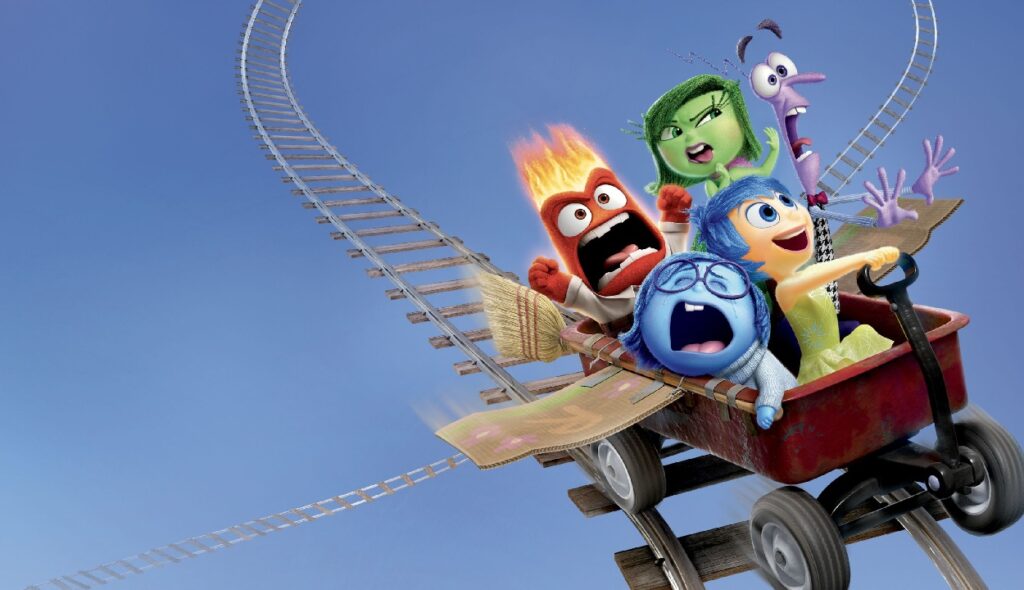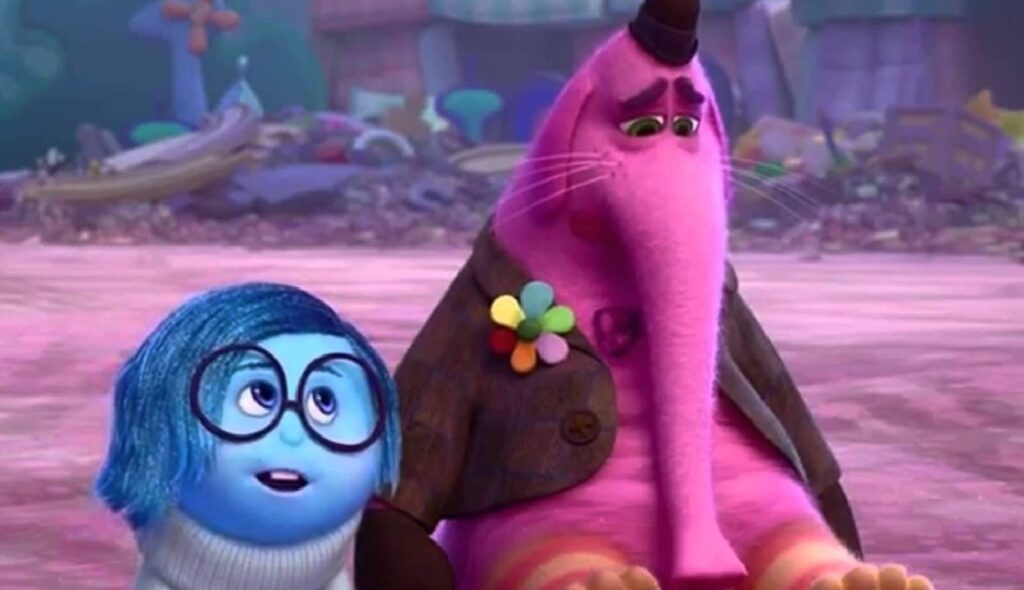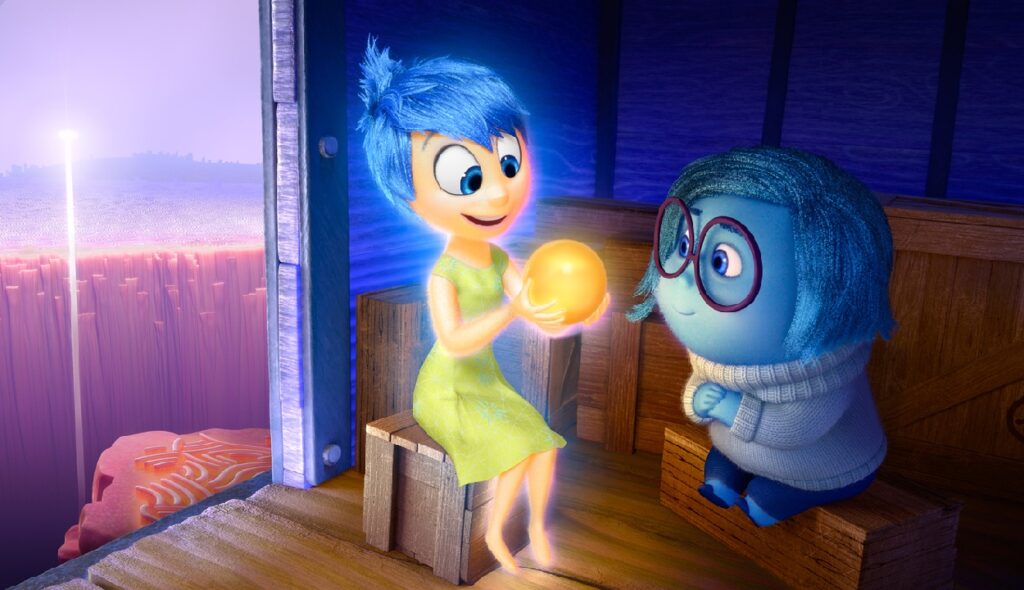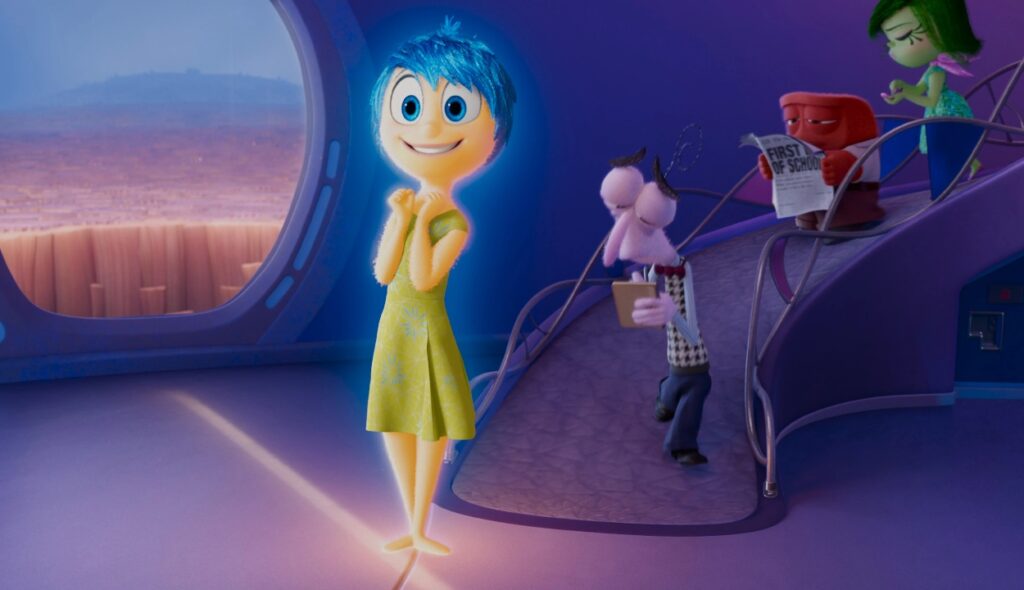Inside Out

“Inside Out” is a critically acclaimed and innovative animated film directed by Pete Docter and produced by Pixar Animation Studios. Released in 2015, the movie takes viewers on an extraordinary journey into the mind of an 11-year-old girl named Riley, exploring the inner workings of her emotions and the challenges she faces during a significant life transition.
Plot:
The film revolves around the emotions living inside Riley’s mind: Joy, Sadness, Anger, Fear, and Disgust. These emotions, personified as colorful characters, reside in “Headquarters,” the control center of Riley’s mind. They guide Riley through her daily experiences and memories, shaping her personality and influencing her actions.
However, when Riley and her family move from Minnesota to San Francisco, she undergoes a rollercoaster of emotions. The move disrupts her familiar routine, separating her from her friends, her beloved hockey team, and her childhood home. As Riley struggles to adapt to her new surroundings, Joy, her most prominent emotion, tries to maintain a positive outlook and keep her happy memories intact.
During Riley’s first day at her new school, a series of unexpected events unfolds. Joy and Sadness, accidentally removed from Headquarters, find themselves lost in the vast landscape of Riley’s mind. As the duo embarks on a journey to return to Headquarters, they encounter various aspects of Riley’s psyche, such as the Islands of Personality, the Train of Thought, and the Subconscious.
Meanwhile, back in Headquarters, Anger, Fear, and Disgust attempt to guide Riley through her daily life without the influence of Joy and Sadness. However, without the balance of these emotions, Riley’s behavior begins to change. Her relationship with her parents becomes strained, and she struggles to express her true feelings.
As Joy and Sadness navigate the intricacies of Riley’s mind, they develop a deep understanding of their roles. Joy realizes that Sadness plays an essential part in Riley’s emotional well-being, as sadness allows for personal growth and empathy. With this newfound insight, Joy and Sadness work together to restore Riley’s emotional equilibrium.
Themes:
“Inside Out” explores several profound themes, such as the importance of embracing all emotions and understanding that happiness is not the sole objective in life. The film emphasizes the significance of accepting and expressing a range of emotions, including sadness, as they contribute to personal growth and resilience. It also sheds light on the challenges of growing up, adapting to change, and navigating complex emotions during adolescence.
Reception and Impact:
Upon its release, “Inside Out” received widespread critical acclaim for its innovative concept, storytelling, and emotional depth. The film was praised for its ability to entertain audiences of all ages while tackling complex psychological concepts in a relatable and accessible manner.
“Inside Out” became a commercial success, grossing over $857 million worldwide. It also garnered numerous accolades, including the Academy Award for Best Animated Feature and a nomination for Best Original Screenplay. The film’s impact extended beyond the box office, as it sparked conversations about mental health and emotional well-being, prompting viewers to reflect on their own experiences and emotions.
Legacy:
The success of “Inside Out” solidified its place in the annals of animated cinema, with many considering it one of Pixar’s most innovative and emotionally resonant films. The movie’s characters, particularly Joy and Sadness, have become iconic and beloved figures in popular culture.
The film’s influence extends beyond its entertainment value. “Inside Out” has been praised for its positive impact on mental health discussions, highlighting the importance of emotional intelligence and prompting viewers to acknowledge and accept their emotions. Its storytelling approach has also inspired other filmmakers to explore complex themes through animation, pushing the boundaries of the medium.
Cast:
- Amy Poehler as Joy
- Phyllis Smith as Sadness
- Lewis Black as Anger
- Mindy Kaling as Disgust
- Bill Hader as Fear
- Richard Kind as Bing Bong
- Diane Lane as Jill (Riley’s mother)
- Kyle MacLachlan as Bill (Riley’s father)
Awards:
- Academy Awards: Best Animated Feature (Won)
- Academy Awards: Best Original Screenplay (Nominated)
- Golden Globe Awards: Best Animated Feature Film (Won)
- BAFTA Awards: Best Animated Film (Won)
- Critics’ Choice Movie Awards: Best Animated Feature (Won)
- Annie Awards: Best Animated Feature (Won)
- Annie Awards: Outstanding Achievement in Writing – Original Screenplay (Won)
Runtime:
Inside Out has a runtime of approximately 94 minutes.
photos & videos :
Rating:
The movie has a rating of 8.1/10 on IMDb and 98% approval on Rotten Tomatoes.
Interesting Facts:
- The concept for “Inside Out” was inspired by director Pete Docter’s own experiences as a parent and observing the changes in his daughter’s emotions during her adolescence.
- The emotions in the film were initially going to be characters like the seven dwarfs, but it was eventually decided to focus on five emotions—Joy, Sadness, Anger, Fear, and Disgust—to keep the story more focused and streamlined.
- The character of Bing Bong, Riley’s imaginary friend, represents the fleeting nature of childhood memories and was designed to evoke a nostalgic and emotional response from the audience.
- To accurately depict the brain’s complexity, the filmmakers consulted with psychologists and neurologists to understand the science behind emotions and memory formation.
- The voice cast of “Inside Out” had a unique recording process. They were allowed to improvise their lines and explore different emotions, which added a natural and authentic feel to their performances.
- The film’s release coincided with the “Year of Emotions” at The Walt Disney Company, with themed merchandise, exhibits, and events centered around the emotions from “Inside Out.”
- “Inside Out” was Pixar’s first film since “Cars” (2006) to not have a short film preceding it in theaters. Instead, a short film titled “Lava” was released alongside the movie, featuring a love story between two volcanoes.
- The film’s emotional themes resonated with audiences and sparked discussions about mental health. Many praised the movie for its ability to help children and adults understand and navigate their own emotions.
- “Inside Out” received critical acclaim not only for its emotional storytelling but also for its stunning animation, particularly the vibrant and detailed depiction of the inner workings of Riley’s mind.
- The film’s success led to the creation of the “Inside Out Emotional Whirlwind” attraction at Disney California Adventure Park and Pixar Pier, allowing visitors to experience a ride inspired by the movie.
These are just a few of the interesting aspects surrounding the 2015 movie “Inside Out,” which captivated audiences with its unique exploration of emotions and its impact on mental health conversations.




